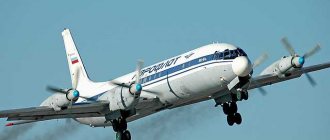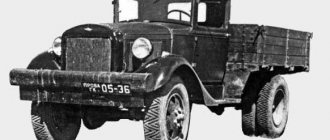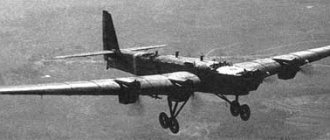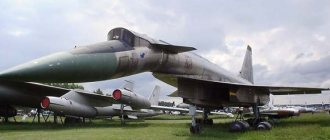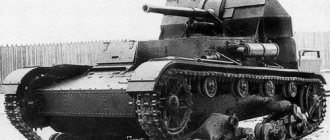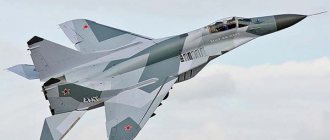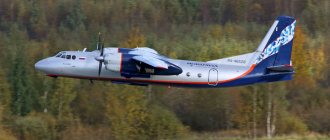A country as large as the USSR has always needed light aviation. Where it is not possible to build an extended airfield, but it is necessary to fly to remote places, the issue of transport accessibility was acute. And therefore, light aircraft played a decisive role and was fully supported by the state.
The Yak-12 aircraft is considered one of the iconic light-engine projects, a symbol of the famous Russian simplicity and reliability. They say that Joseph Stalin himself ordered its development. And it is not surprising that the work was entrusted to the famous Soviet designer, a lover of light-engine cars, Alexander Sergeevich Yakovlev.
History of creation
The need to develop a new aircraft in the Soviet Union arose even before the Great Patriotic War. The U-2 (Po-2) and Ut-2 in service at that time were already noticeably outdated and required either complete replacement or early modernization.
But the war intervened in the plans of aircraft designers. Development of a new light aircraft, of course, was underway, but the military industry came to the fore.
After the war, the first Yak-12s saw the light of day. First, two experimental models: the Yak-13 and the Yak-14 were presented to the commission to decide on mass production. Both aircraft were considered quite successful. The Yak-13 even demonstrated better range and flight speed than the Yak-14.
But due to the simplicity of the design and ease of operation, the commission gave preference to the fourteenth model and gave the go-ahead for its release. The car was renamed: the Yak-14 series went under the name Yak-10.
But already in 1947, a decision was made at the highest level to modernize the project. The new model, which will later be known as the Yak-12, is based on its predecessor, the Yak-10, but with modifications. Some innovations were cosmetic in nature, others involved serious changes.
One way or another, in April 1947, the aircraft had just begun to be designed, and in October of the same year, the Yak-12 took off for the first time.
The wing received significant differences: its consoles became smaller in area due to a decrease in the overall span. The front part of the consoles received a slat. The cabin has also undergone some changes. Firstly, its upper part was glazed. Secondly, the garrot of the passenger seats was lowered somewhat.
In the spirit of the times, the Yak-12 was also equipped with lights for air navigation, as well as a headlight for landing in the dark.
By the way, despite numerous changes, the aircraft turned out to be lighter than its predecessor, which led to improved speed characteristics.
After the first tests, the Yak-12 will also appeal to the military. They initiated a number of important improvements for their version, which made it possible to increase range, speed and reliability. January 5, 1948 is considered the day when the Yak-12 began its official journey in USSR aviation.
Aircraft medical sample
The Yak-12S, produced in 1948, is considered a sanitary variant of the aircraft from this series. The design of this aircraft was adapted to transport one patient. A stretcher was located on the left side of the side. No other changes were made to the Yak-12. The empty aircraft weighed 852 kg and can withstand a load of up to 380 kg. It included the weight of special equipment, which was 22 kg. The Yak-12S transported a medical load of up to 175 kg and was better in its parameters than the U-2S.
Main purpose
Initially, it was planned to create a light aircraft that could perform several purposes at once. The Yak-12 was well suited for agricultural needs and was used for pest control. The Yak-12 also performed its second application - service in civil and ambulance aviation - quite successfully throughout the entire service life allotted to it. And mass production continued for quite a long time - until 1968.
Among the military, the light-engine Yak model has found use not only in transporting people, but also for transporting small loads.
The machine was widely used by postal services.
Improvement work
The very first option is considered to be the aircraft design of the Yak-12. The aircraft model in modification A underwent changes over time:
- The wings acquired a trapezoidal shape and began to be equipped with slats containing one strut each.
- Fuel tank: increased size.
- Chassis: reinforcement.
- The steering wheel acquired a horn-like shape.
- Cockpit. Visibility has been improved by glazing the front and sides. A significant improvement in cabin comfort was achieved through the use of soft seat upholstery. The permissible weight that the Yak-12A could lift was 1588 kg. Due to changes to the wing, the aerodynamics of the aircraft were significantly improved, the speed and flight range increased by 30 km/h.
Design features
The Yak-12 is a strut-braced high-wing aircraft. The tail plumage is braced and braced. The engine was installed in the car in front of the pilot's cabin. The landing gear was not retractable: it was equipped with a braking system.
The M-11FR engine was first installed in the engine frame. But it was often criticized for its lack of power. In particular, this property did not allow it to quickly rise into the air, requiring a long take-off run. Later, the Yak-12 began to be equipped with the M-14 engine (Ai-14FR).
The power of the new power plant was 250 horsepower, while the predecessor produced no more than 160 horsepower. This measure reduced the take-off run by one and a half times and increased speed performance.
The engine was protected by a metal hood. Cooling was air, but there was one interesting feature. The louvers at the front of the hood, which let in air for cooling, could be adjusted by the pilot. In this way, it was possible to control the engine cooling intensity.
The fuselage frame was built from pipes welded together. Initially, the nose was made of duralumin. The rest was made of wood. But gradually new modifications included more and more metal, until they began to be made entirely of duralumin. This was required to extend service life, since the machines were often parked in the open air rather than in hangars.
The wing was made of two spars, most often made of wood.
It was reinforced by V-shaped mounts that converged at the base of the chassis on the cab. The Yak-12 was equipped with a slat, which occupied almost the entire front part of the wing. Thanks to the slat, a very useful effect was achieved - even high angles of attack prevented stalling and loss of lift.
Assembly
- When assembling the product, it is important to ensure that the laminated side is on the outside.
- An important aspect is compliance with the dimensions of the cut parts with the dimensions of the battery - it may be larger than planned in the drawing. It is recommended to take measurements first using a ruler.
- For strong bonding, it is advisable to use clothespins, weights or a vice.
- To form the required bend, rolling on the pipe can be used.
- After this, all parts of the Yak-12 in contact with each other are glued together. A radio-controlled airplane model, the flight of which is often associated with falls, needs to strengthen the structure.
- Reinforcement with tape will help to give strength to the manufactured product.
- It is recommended to use stiff wire to attach servos.
- The motor frame on which the motor is mounted must be made of thin plywood. It is very convenient to screw the mounting screws onto it.
- If you don't have a piece of plywood, you can also use plastic, aluminum or foam. The main thing is that the material is light. It is desirable that the weight of the manufactured model does not exceed 600 grams.
- It is recommended to launch the product with one throw from the hand.
- To begin with, landing should be done with the belly of the aircraft on a soft surface. To do this, it is not necessary to mount wheels on the structure.
The cost of a Ford Focus or Pegout 3008 is equal to the price of such an aviation creation as the Yak-12 aircraft. The photo below shows the features of its external design. But it should be recalled that different modifications were produced.
Nowadays, the Yak-12 aircraft is considered a rarity. It can be found among aircraft collectors.
Flight performance
The Yak-12 was equipped with the necessary equipment for navigation in the sky, as well as for communication with the ground. The first versions required a take-off run of at least 185 meters for take-off at full weight. Their maximum speed reached 194 km/h.
But those Yak-12s that were the first to roll off the assembly line received a lot of dissatisfied reviews. Mainly because of the weak engine, which made the car slow, difficult to maneuver and impractical. Therefore, most of the innovations that found their way into later models often significantly improved performance, through new engines and manipulations of wing geometry.
| Model | Yak-12, model 1947 |
| Wing | Length – 12 meters, area – 21.6 square meters |
| Fuselage length | 8.36 m |
| Height | 3.76 m |
| Weight (empty/maximum at takeoff) | 830 kg/1185 kg |
| Engine power (PD M-11FR) | 160 hp |
| Speed (cruising/maximum) | 169 km/h / 194 km/h |
| Range of flight | 810 km |
| Duration of non-stop flight | 4 hours |
| Ceiling | 3000 m |
| Crew/load | 1 pilot/2 passengers or cargo up to 355 kg |
Photo of Yak-12
Similar
An-24 Engine. Dimensions. Range of flight. Practical ceiling. Story
Tu-154 Speed. Dimensions. Weight. Capacity. Fuel consumption. Story
Yak-40 Engine. Dimensions. Capacity. Range of flight. Practical ceiling. Story
An-2 Engine. Dimensions. Story. Range of flight. Service ceiling
Tu-144 Engine. Dimensions. Range of flight. Practical ceiling. Story
IL-96 Speed. Dimensions. Capacity. Story. Load capacity
IL-62 Engine. Dimensions. Range of flight. Practical ceiling. Story
IL-18 Engine. Dimensions. Range of flight. Practical ceiling. Story
IL-14 Engine. Dimensions. Story. Range of flight. Service ceiling
An-14 Pchelka Speed. Dimensions. Weight. Capacity. Story. Load capacity
An-148 Speed. Price. Dimensions. Story. Capacity. Fuel consumption
Yak-42 Speed. Dimensions. Capacity. Fuel consumption. Story. Range of flight
Tu-114 Speed. Dimensions. Weight. Capacity. Story. Load capacity
Yak-12 Speed. Dimensions. Weight. Story. Capacity. Load capacity
An-3 Engine. Dimensions. Range of flight. Service ceiling
IL-114 Engine. Dimensions. Range of flight. Service ceiling
Yak-52 Engine. Dimensions. Range of flight. Service ceiling
Tu-334 Speed. Dimensions. Weight. Story. Capacity. Range of flight
Tu-134 Speed. Dimensions. Capacity. Fuel consumption. Story. Range of flight
IL-86 Engine. Dimensions. Range of flight. Service ceiling
Tu-204 Engine. Dimensions. Range of flight. Practical ceiling. Fuel consumption. Price
Tu-104 Engine. Dimensions. Story. Range of flight. Service ceiling
Su-29 Engine. Dimensions. Range of flight. Practical ceiling. Story
Su-31 Speed. Price. Dimensions. Story. Load capacity
Tu-124 Speed. Dimensions. Capacity. Weight. Story. Range of flight
Su-26 Engine. Dimensions. Range of flight. Service ceiling
An-10 Speed. Dimensions. Weight. Story. Capacity. Load capacity
An-140 Speed. Price. Dimensions. Capacity. Fuel consumption. Story
MiG-8 Duck Engine. Dimensions. Story. Range of flight. Service ceiling
Be-30 / Be-32K Engine. Speed. Dimensions. Range of flight. Service ceiling
An-38 Speed. Dimensions. Weight. Story. Capacity. Range of flight
Be-103 Speed. Price. Dimensions. Weight. Story. Capacity
IL-103 Engine. Dimensions. Capacity. Load capacity. Range of flight. Service ceiling
LK-1 (NIAI-1 Plywood-2) History. Dimensions. Engine. Range of flight
ANT-20 Maxim Gorky Speed. Story. Engine. Dimensions. Range of flight
Tu-110 Engine. Dimensions. Range of flight. Practical ceiling. Story
Yak-58 Speed. Dimensions. Weight. Story. Range of flight. Service ceiling
Aviatika-MAI-890 Engine. Dimensions. Speed. Range of flight. Service ceiling
Yak-50 Speed. Dimensions. Story. Range of flight. Service ceiling
Yak-55 Speed. Dimensions. Weight. Story. Range of flight. Service ceiling
IL-12 Engine. Dimensions. Story. Range of flight. Service ceiling
ANT-35 (PS-35) Engine. Dimensions. Story. Range of flight. Service ceiling
Airplane K-5 Engine. Dimensions. Story. Range of flight
KhAI-1 Engine. Dimensions. Story. Range of flight. Service ceiling
Yak-53 Dimensions. Range of flight. Weight. Service ceiling
MAI-223 Kitten Photo. Video. Characteristics. Engine
AIR-6 Engine. Dimensions. Story. Range of flight. Service ceiling
PS-89 (ZIG-1) Engine. Dimensions. Story. Range of flight. Service ceiling
SAM-5 Engine. Dimensions. Story. Range of flight. Service ceiling
Airplane Steel-3 Engine. Dimensions. Story. Range of flight
Airplane ANT-1 Engine. Dimensions. Story. Range of flight
Airplane U-8 Little Humpbacked Horse History. Dimensions. Engine
Airplane K-1 Engine. Dimensions. Story. Range of flight
Modifications
The aircraft was simple to manufacture and structurally did not contain frills. This made it possible to widely use it in completely different areas of human activity.
As a rule, only minor modifications were required, which led to the creation of specialized modifications.
- The Yak-12 “product 21A” is the very first modification that led to the elimination of those shortcomings inherent in the launch production models. A slat appeared for the first time on this model, and the chassis design changed somewhat. The designers slightly reduced the wing span. Thanks to innovations, the Yak began to take off with a shorter run and at a higher speed.
- The Yak-12 “float” was the first model that could take off from the water. It was equipped with wooden landing gear floats.
- Yak-12A. This is a deep modernization of its predecessor, the Yak-12. The most important innovation is the change in the wing. Now it became trapezoidal, and the slats were retracted on the consoles. The new wing increased the flight speed and range, but the vehicle's ceiling was smaller. In addition, the designers improved visibility from the cockpit, increased comfort for pilots, made the seats soft, and changed the control stick to a half-wheel. The chassis was again structurally strengthened, and the fuel tanks became larger. The take-off weight has also increased.
- The Yak-12B was intended for takeoff with a short runway. The required distance was at least 35 meters. Among the differences of the model we can highlight: two wings (biplane) and a forced AI 14-RF engine, which produced 300 horsepower.
- Yak-12GR – equipped with floats for take-off from water. Due to the lack of engine power, it received a lot of criticism, as it required a long distance to get into the air.
- Yak-12M. Another transformation of the light-engine vehicle, which again entailed strengthening the chassis and fuselage. The main distinguishing feature is the extension of the fuselage to 9 meters. This, in turn, required an increase in the tail section. The rear wheel of the chassis received hydraulic shock absorption. The Yak-12M could carry 3 passengers, which, when modified for medical aviation, made it possible to take off not only with a patient transported on a stretcher, but also with an accompanying medical worker.
- Yak-12MM. It was often used as a medical transport and was equipped with floats for take-off and landing on water. Unlike the Yak-12GR, it had two water rudders on each float, which increased maneuverability.
- The Yak-12MS is a special version for search and rescue operations. It was practically no different from the Yak-12M - only in the presence of additional radar radio equipment for searching for injured people and ships. A rotating antenna was installed on the bottom of the vehicle, and a compartment for a parachute was also adapted.
- The Yak-12R has undergone major modifications. It was used mainly for communications, but later came in handy as a good transporter. Among the big differences are: an increase in the wing area, installation of a new propeller, a more powerful engine (up to 260 hp), as well as equipping with a coulter, which made it possible to reduce the landing run on unpaved airfields to 50 meters.
- Yak-12S is a special sanitary version. There were no design features - only space for a stretcher and a medical worker to accompany it.
- Yak-12СХ - intended for agriculture. In the passenger seat behind the pilot, a container for fertilizers or pesticides was installed. Sprayers or diffusers were also structurally provided on the bottom. They could be used, among other things, for scattering seeds over fields.
- The Yak-12UT featured dual controls and was used for educational and training flights.
- PZL-101 is a Polish modification of the Soviet Yak-12. Poland launched its own production under license, in which it increased the payload of the machines. Most often they were used for agricultural needs.
- Shenyang Type 5 - Yaks that were produced by the Chinese side. They were a complete analogy of Soviet light-engine cars.
During the production of the Yak-12 (from 1947 to 1968), about 5,000 vehicles were built in the Soviet Union alone. Analogues of the Yak-12M were assembled in Poland in quantities of more than 1000 copies. And our own development PZL-101 was produced in the amount of 325 pieces.
The aircraft underwent various modifications even after production was completed. Basically, this was done by folk craftsmen. Thus, the Yak-12 is still used in sports or at exhibitions.
Yak-58 Speed. Dimensions. Weight. Story. Range of flight. Service ceiling
In the early 1990s. at OKB im. A.S. Yakovlev proactively carried out work to study the potential demand for air travel in the country, which showed that there is a definite need for the creation of “business” class aircraft with 6-10 seats. Moreover, the greatest demand is for flights within a range of up to 1000 km. Analysis of the survey results showed that to almost completely satisfy such demand, it is enough to have two types of aircraft: a jet for 6-10 seats with a flight range of 4000-4500 km and a piston aircraft for 4-6 seats with a range of up to 1000 km. Based on the results of the analysis, the design bureau began to develop such aircraft. The first of these was the four-seat piston aircraft Yak-112, built in 1992.
The second was the six-seater Yak-58 aircraft, created in 1994 under the leadership of the chief designer of the OKB Yu.I. Yankevich. The Yak-58 is designed for business and service flights, transportation of passengers and small cargo. It can also be used as a training aircraft, ambulance, patrol aircraft for inspecting gas and oil pipelines, power lines, and exploration of fish stocks in coastal areas. The low cost and ease of implementation of modifications make it possible to use it cost-effectively in various sectors of the national economy, as well as for commercial purposes. The aircraft is equipped with a commercially produced air-cooled piston engine in our country, M-14PT, with a power of 360 hp, various modifications of which are successfully used on almost all sports and training aircraft created in our country. Although in the future the installation of another engine with a more modern set of equipment cannot be ruled out, this is at the request of individual customers both in our country and abroad.
The aircraft is built according to a two-boom design with a low wing, a U-shaped tail unit, and a retractable tricycle landing gear. The all-metal fuselage is made according to a semi-monocoque design. The cabin is not airtight. The basic version of the aircraft provides space for one pilot; if necessary, two pilot seats can be equipped. Passengers enter and exit through a sliding door on the starboard side in the middle part of the fuselage. There is a door for the crew on the left side. The two-fin vertical tail provides the necessary degree of directional stability and increases the efficiency of the horizontal tail. In the event of an emergency evacuation of the aircraft in the training version in the air, the doors are easily separated from the fuselage and dropped. The pusher engine is located at the rear of the aircraft, providing good visibility from the cockpit and increasing comfort for the pilot and passengers. The use of a pusher propeller with an increased diameter compensates for possible losses from adverse interference with the fuselage.
Dashboard of Yak-58
The cabin has four chairs and a sofa for passengers and crew. Between the sofa and the rear partition there is a luggage compartment, access to which is provided when the back of the sofa is reclined. In the cargo version, three cargo containers are installed in place of the passenger seats, which can move on rollers along a special cargo platform and are fixed on it in a certain position. In the containerless version, the loads are placed on the floor and are attracted to the floor by a net. In the sanitary version, the aircraft allows the patient to be transported on a special stretcher, accompanied by a doctor.
Trace in history and cinema
The popularity of the aircraft was very high. In a professional environment, pilots appreciated its unpretentiousness, ease of operation and high reliability. That is why the light-engine vehicle was used throughout the vast territory of the USSR and the countries of the socialist camp.
Today, this worker can be found in many aviation museums around the world.
It is available both in Russian cities and in Poland, where it was successfully produced for a long time. The fame of the Yak-12 has also established itself in popular cinema. The cars were featured in such famous films as “Allow Takeoff!”, “The Last Inch”, “Va-Bank 2”.
Educational and training version
At the beginning of 1959, Soviet designers began developing a simulator of the Yak-12 UT aircraft. Its purpose was to train military pilots to perform instrument landings. For this purpose the cabin was equipped with:
- The second set allows you to both start the engine of the Yak-12 UT aircraft and perform hand and foot control.
- ARK-5 radio compass.
- A simplified set of OSP-48 equipment, with the help of which a blind landing was carried out.
- Marker receiver MRP-48.
- Radio altimeter RV-2.
- Generator GSK-1500. With its help, the equipment was powered.
Discontinued
The Yak-12 and its numerous modifications were successfully mass-produced until 1968. Afterwards, they completed their work and were gradually withdrawn from regular air services. According to the most accurate estimates, the last aircraft should have been written off in 1980.
Today it is known that the Yak-12 is used only in private collections and flying clubs.
Like many representatives of Russian technology, the Yak-12 became a simple, cheap and reliable representative of its time.
It is this successful combination that can explain the great success of these models.
It often worked flawlessly in difficult weather conditions and did not require serious preparation of the runway. All this made it indispensable for air ambulances, agriculture, small cargo transport and short-distance civil flights.
One of the most famous projects of the Yakovlev Design Bureau served its term conscientiously, which is why its fame is still strong. People's love for him is also not forgotten over the years. Evidence of this is the brilliant beauty of the Yak-12, which still flies in the skies under the control of numerous amateur aviators.
Manufacturing parts for the product
Based on the existing drawings, you can begin cutting out the required parts. It's good if the part has a large number of straight lines. In this case, it is considered simple.
To work with such a drawing you will need a needle. Using it, all available angles are marked with punctures. Then, along a ruler placed from one puncture to another, paper cuts are made using a stationery knife. They are carried out sequentially until the drawing produces a part of the future aircraft that is completely ready for gluing. When gluing them, it is important to ensure that the dimensions and geometry of the future model are not violated.
On each sheet there may be excess areas that need to be cut off. As a result, all fragments of the structure must fit perfectly together. Only after this can they be glued using a syringe.
Yak-53 Dimensions. Range of flight. Weight. Service ceiling
In 1981, at OKB A.S. Yakovlev created the single-seat sports training aircraft Yak-53. Mostly young engineers and workers took part in the design and construction of the aircraft, as well as other light-engine vehicles. Its main difference from its predecessor, the Yak-52, is the absence of a front cockpit. On this machine, the spring loaders of the steering wheels, necessary on the Yak-52 trainer, were removed, as well as the radio compass, heading system and other equipment. The aircraft became almost 100 kg lighter than the Yak-52, which allowed it to perform the most complex forward and reverse aerobatics.
The first flight on it was performed by a young pilot A. Sinitsyn. In tests, the aircraft showed excellent flight performance. Test pilots M. Molchanyuk and V. Makagonov also took part in the tests. It was they who set two world climb rate records on the Yak-53 at a height of 3000 and 6000 meters.

